Glad to hear the dark horse apam balik stole the show! Check to the right for the handout from class.
Important note au français: If you ever want to talk about crêpes and seem fancy, you 100% gotta make that ê. If you’re using OS X or an iPhone just hold down the e key for a while and you will be givēn s sęlèction of diffêrént Ē’s to pick from. If you’re using a PC just buy a mac and follow the previous instructions.
Crêpe-ing around
The number one important part of making something crêpe-ish and impressing everyone around you is having a nice thin pancake. While sure, you could just water down your batter a lot, technique has a lot to do with it.
So as a foolproof reminder and a solid excuse to use gifs, here are your four methods of spreading a nice thin crêpe.
The Pan Shift
Absolutely anyone can execute the pan shift. Any thing could probably do the pan shift, including a subway rat or a turtle.

You must ask yourself: are you better than a turtle? I’d like to think so. Don’t use the pan shift.
(And if you do, do a better job than the person in this image.)
The Spreader
The spreader works best on a griddle without a lip, so you can just cut the unruly sides off.
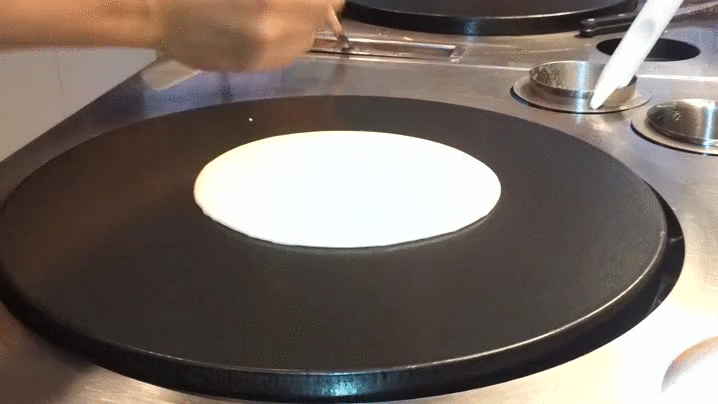
It makes you look hella cool if you can pull it off though, and they’re only $10 for 3 on Amazon.
The Magic Pour
The Magic Pour is a spiraling motion stolen from injera-making (injera being the spongy bread from Ethiopian cuisine).
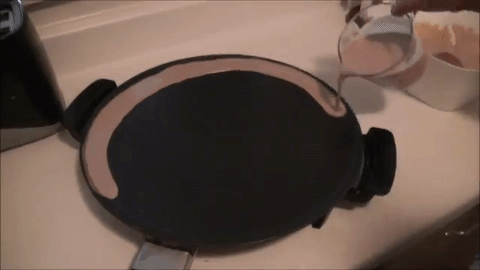
It’s easiest to do with a liquid measuring cup, the kind with the little lip on the end for liquid to come out of. You can also do two spirals, one inside the other, which I find a little easier than this lady’s reckless single spiral
The Pushy Spiral (previously the Magic Spiral)
The Pushy Spiral is my favorite by far, taken from dosa making (dosas being the South Indian rice-and-black-lentil crepe).

If you only have a big ladle to do the pushing-around with, try using a metal eating spoon instead. The spoon will be much more shallow than the ladle so you’ll be less likely to “grab” little bits of cooking batter as you spiral out.
Blintzes
Blintzes, rocketed straight out of Eastern Europe and adopted by the magical land of France! Originally buckwheat, their ancestors live on as Breton galettes.
Making Blintz batter
Blintz batter is simple, with a 1:1 ratio of flour to milk and 3 eggs for every cup of flour. Make sure you mix the dry ingredients before the wet ones, too.
Remember to let it rest! You’ll probably have whipped it up a lot to get rid of any lumps - it’s thin, so lumps are bad - and the rest will help the gluten relax.
Cheese filling
Remember how moist it got after we added the egg, and how it liked to try to escape from the blintz once it was made? The drier it is, the better off you are: letting your cheese sit over the sink in a cheesecloth-lined colander or strainer is a good bet, although if you’re impatient feel free to hop right into mixing it up.
There are a thousand other types of filling you can use, too, don’t be afraid to google around for other options.
Folding your blintz
If there’s one thing to remember about blintzes, it’s that you should never trust your origami-making friends. The blintz fold, pictured below, has not much at all to do with how a blintz should actually look.
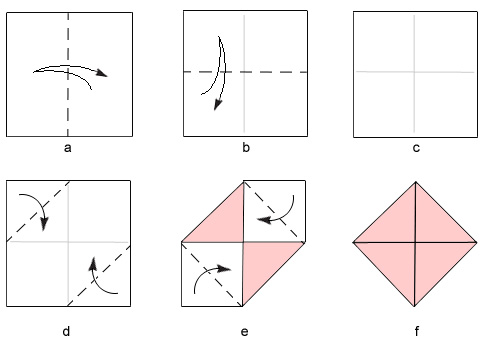
Blintzes should instead be folded this way.
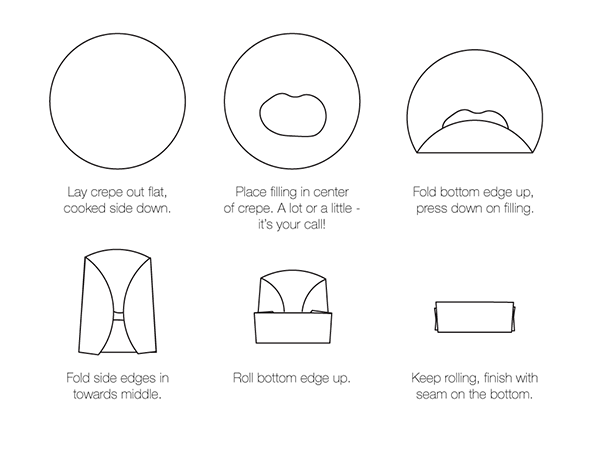
Be sure to fry them seam side down or the filling will spill everywhere.
Apam Balik
There is no king of recipes for apam balik.
It’s 1) street food, and 2) Malaysian, which means it’s very tough to find even pretenders to the authoritative-recipe throne. Even professional chefs from Malaysia who publish cookbooks have incredibly different opinions about how to make apam balik.
Flour composition
When buying rice flour for apam balik, make sure you buy normal rice flour. Not glutinous rice flour, not sweet rice flour, not any kind of weird rice flour. If you have a choice betwen red and green, pick red. I promise.
You can try making these with only rice flour (I haven’t done it), and you can definitely make them with only wheat (a.k.a. normal) flour.
Remember that you’ll need to water down the batter after it finishes relaxing, as it won’t be in a pourable state yet. Because you can use coconut milk, coconut water, or plain water as the liquid and nearly any kind of flour it seemed like a fool’s errand to give you specific numbers. Just water it down until it seems pour-y and pancake-y.
The Process
If you happen to have an apam balik stand, these animations will help you remember how to operate it.

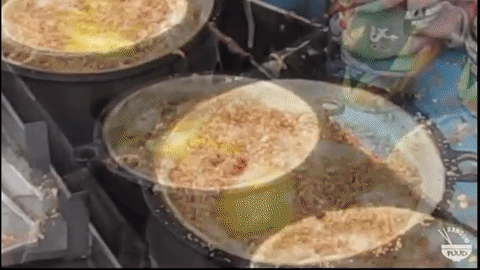

You know you love that sweet creamed corn.